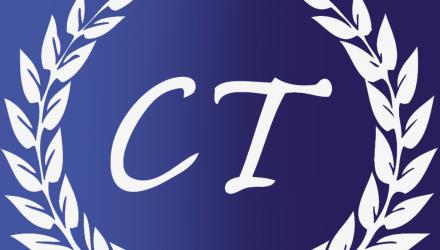In our regular column on research that's relevant to physiotherapists, Janet Wright looks at the latest clinical findings.
Chronic pain
Physios speak up on talking therapy
Psychological strategies for coping with pain are increasingly being offered as treatment for long-term conditions.
Now researchers are looking into physios’ perspectives on using psychotherapy techniques to help patients deal with pain.
A team of physiotherapy researchers in Australia set up a randomised controlled trial of pain coping skills training (PCST) for knee arthritis.
Earlier research had shown that a combination of PCST and exercise provided by specially trained physios improved both physical and psychological outcomes for patients with knee arthritis (MA Hunt et al. Knee 2012)
Physios were trained to carry out PCST, in a three-to-four-day workshop followed by months of formal mentoring and performance feedback from a psychologist.
Interviewed at various stages throughout the trial, the participating physios reported positive experiences with both PCST and their part in the trial, which they felt had enhanced their general practice.
However, they believed that comprehensive training and mentoring by psychologists was crucial.
‘Although some components of the PCST programme were familiar, the therapists found delivering the programme was quite different from regular practice,’ say the researchers. Neilsen M et al. Physical Therapist–Delivered Cognitive-Behavioural Therapy: A Qualitative Study of Physical Therapists’ Perceptions and Experiences. Physical Therapy 2014
Period pain
Physiotherapy treatments may relieve dysmenorrhea, a systematic review of the evidence has reported.
Researchers looked through 222 potential papers and analysed 11 suitable randomised trials of physiotherapy interventions to ease the pain many women experience at menstruation.
Most of these covered acupressure or acupuncture, with or without electricity. There were also two on spinal manipulation and one each on heat therapy, yoga and transcutaneous electrical nerve stimulation (TENS).
Acupuncture looked effective compared with no treatment. But trials comparing it with sham acupuncture revealed that both were helpful, which the authors suggest may mean all the benefits stem from the placebo effect. The same was found of acupressure.
Spinal manipulation did not prove effective. Heat patches, TENS and yoga did ease period pain, although the authors note that the quality of research was not high. However, they said, the costs and risks are also low.
‘Physiotherapists could consider using heat, transcutaneous electrical nerve stimulation and yoga in the management of primary dysmenorrhea,’ the authors conclude. Kannan P & Claydon LS Some physiotherapy treatments may relieve menstrual pain in women with primary dysmenorrhea: a systematic review. Journal of Physiotherapy 2014 (in press)
Pain neuroscience
Brain activity suggests mindful response
Abnormalities in the way the brain anticipates a painful stimulus may be at the root of many people’s chronic pain, researchers have found. This means the pain could be treated by new ‘talking therapies’ that target brain mechanisms to help the brain to cope more effectively.
A team from Manchester University recruited volunteers with either fibromyalgia – a condition in which patients have widespread chronic pain of no definite cause, along with poor sleep and psychological symptoms – or osteoarthritis. A third group had no pain.
The two groups with painful conditions were well matched for clinical levels of pain and for related psychological factors such as anxiety, depression or ‘pain catastrophising’ – a tendency to fear and expect the worst.
All the volunteers received slightly painful laser pulses while the researchers measured their brain activity.
While those with arthritis or fibromyalgia were awaiting the laser’s sting, a brain area called the insula cortex – associated with body perception and emotional responses – increased its activity.
This matched the intensity of the patients’ usual chronic pain.
Another area, the dorsolateral prefrontal cortex, showed less than usual activity. This corresponds with reduced ability to develop positive ways of coping with pain, say the researchers.
‘Our previous work has shown that brain responses to pain expectation can be altered by relatively short and inexpensive mindfulness-based talking therapies in patients with different types of chronic pain,’ says researcher Wael El-Deredy.
‘Our current findings therefore provide both a new target for development of new therapies and some optimism for simple interventions to improve the brain’s control of chronic suffering endured by many patients with chronic pain conditions.’
Brown CA et al. When the brain expects pain: common neural responses to pain anticipation are related to clinical pain and distress in fibromyalgia and osteoarthritis. European Journal of Neuroscience 2014
Pain: Comments&Conclusions
- People over 50 who sleep badly are more likely than others to develop widespread pain within the next few years. Anxiety, loss of memory, physical health and quality of life also affect the risk, but to a smaller extent.McBeth J et al. Arthritis & Rheumatology 2014;
- There is ‘compelling’ evidence that hyperexcitability of the central nervous system and brain abnormalities play a crucial role in chronic spinal pain, say researchers. They propose ‘a modern neuroscience approach, comprising therapeutic pain neuroscience education followed by cognition-targeted motor control training’. Nijs J et al. Physical Therapy 2014;
- Vitamin D supplements may reduce the pain of fibromyalgia. Researchers divided fibromyalgia patients with low vitamin D levels into two groups and gave supplements to one group for 20 weeks, while the others received a placebo. The patients taking a supplement reported a marked reduction in pain, unlike those taking the placebo. People with fibromyalgia often have low levels of vitamin D. Wepner F et al. Pain 2014;
- When brain-injured children have both pain and post-traumatic stress disorder (PTSD), the PTSD is likely to be perpetuating the pain rather than the pain causing the stress disorder, say researchers. Brown EA et al. Journal of Pediatric Psychology 2014;
Author
Janet Wright
Number of subscribers: 1




































